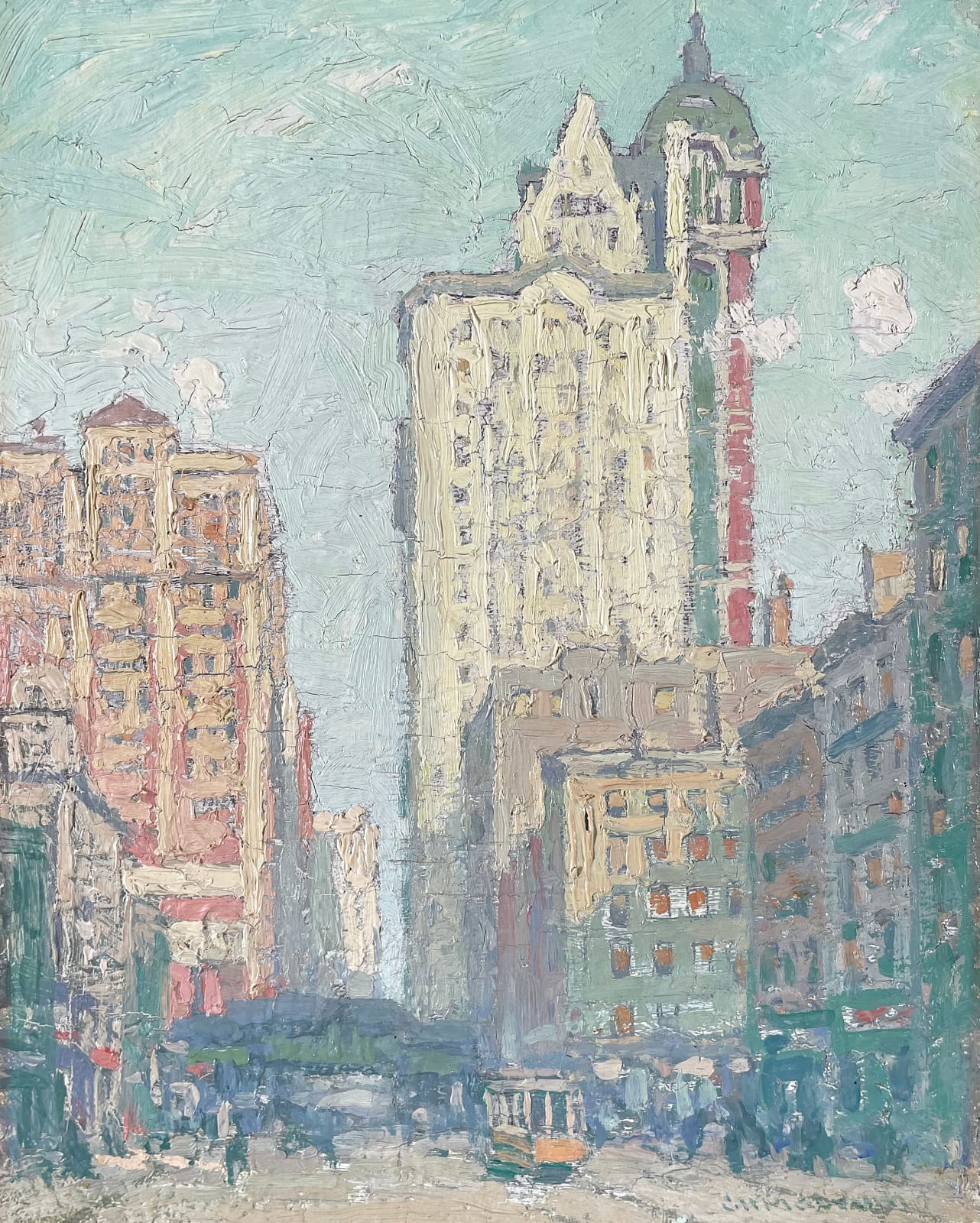George Herbert Macrum
Framed dimensions: 15 3/4 x 13 1/2 inches
On verso: Cortlandt Street / Geo H Macrum / 65 W 69 St
Specializing in New York City's vibrant urban landscapes and surrounding harbors, George Herbert Macrum (1878–1970) captured the essence of the city’s architectural grandeur and dynamic change. Macrum’s work often reflects the evolving skyline of the early 20th century, a time when skyscrapers like the City Investing Building and the Singer Tower, both completed in 1908, symbolized New York's burgeoning modernity.
The City Investing Building, with its distinctive “H”-shaped design by Francis H. Kimball, stood as one of the largest buildings of its time, before being demolished in the early 1960s to make way for One Liberty Plaza. Likewise, the Singer Tower, once the tallest building in the world at 612 feet, was a Beaux-Arts masterpiece designed by Ernest Flagg. Despite its architectural significance, it too was demolished in 1968, also replaced by modern development in the form of the U.S. Steel Building (now One Liberty Plaza).
The street is named after Oloff Van Cortlandt and his family. Van Cortlandt, who arrived in New Amsterdam in 1637 from The Netherlands, was a rich brewer and leading citizen of the colony – he was burgomaster from 1655 to 1666 – and owned the land on which the street was laid. His son Stephanus Van Cortlandt was the mayor of New York from 1677 to 1678, and again from 1686 to 1688. He was the city's first native-born mayor. During the early 20th century it was the site of Radio Row, a small business district specializing in the sale and repair of radios. All except one block was razed in the mid- 1960s for the construction of the World Trade Center. After the destruction of the original World Trade Center in the September 11 attacks, Cortlandt Way opened in 2012 as part of the new World Trade Center.
This painting was a farewell gift to the grandmother of the previous owner around 1960, bestowed by a U.S. general in recognition of her loyal service as a housekeeper for the American army in Bremen since 1945. It appears to still have its original frame from the 1920s or 1930s.
Provenance
Louis Katz Galleries, New York
Private Collection, Germany, circa 1960;
Sold by descent via AAG Auctioneers Amsterdam;
Private collection, Amsterdam



